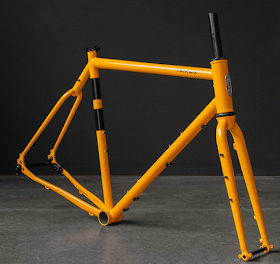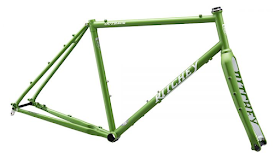 |
| L-R: The PRO Carbon post, Whiskey Carbon post, Specialized C-GR |
The posts I used included the Specialized C-GR, the Whiskey Parts No. 7 seat post, the PRO Carbon post, the PRO Aluminum post, and the vaunted Redshift Sports ShockStop suspension seat post.
So, let me get the obvious out of the way right up front: Nothing was as comfortable to ride as the Redshift post. Not even close. Secondly- nothing else was nearly as heavy as the Redshift post. To get that level of isolation from vibrations, that comes at a monetary and weight compromise, versus something like the Whiskey No. 7 Carbon Post, which is light and costs under a hundred bucks. But obviously, that Whiskey post, or the others I mentioned, don't have anywhere near that level of smooth.
So, with the Redshift post being the outlier, what post would I go with out of the others? The PRO Carbon post, with the Dyneema fabric, is really light at about 215 grams or so. The C-GR is supposedly pretty cushy too, and that Whiskey post is the least expensive of the lot and has a smooth ride to boot. They are all at about the same level of comfort here, but that said, there are some clear distinctions.
The C-GR is clearly the best feeling post, in terms of what you don't feel. That isn't to say that its claims of 'travel' are there. I didn't feel it being any smoother than the Whiskey post, as an example. However; it does mute a lot of vibrations. In that area, it was the best of the lot of rigid posts. (I classify it as rigid since I don't get any sensation the C-GR actually has any travel) The bad thing? Set back, which the C-GR has a LOT of. If you don't like a lot of set back- don't even look at this post.
The PRO Carbon was probably the next best at vibration absorbing. It supposedly has deflection as well, but the C-GR and this post have similar feeling bump absorbing capabilities. The C-GR just mutes a bit different frequencies, and I thought it edged out the PRO, but barely. Obviously, this post has a reasonable set back, a very usable saddle fore/aft range, and it has the easiest to use clamp of the lot by far.
 |
| The PRO Carbon post here. |
The Whiskey Post has probably the most deflection here, so if bumps are more of an issue, this post is by far the winner. It does okay in terms of vibration damping, but it doesn't surpass or even attain to the C-GR or the Pro Carbon. It weighs a bit more than the C-GR and is quite a bit heavier than the featherweight PRO Carbon post at 273 grams. As mentioned, this post costs the least amount, by far.
The PRO Aluminum post was the control here, and it does what the majority of good aluminum posts do. By the way, I have three titanium Salsa Cycles Regulator posts as well. That post is the heaviest of the rigid posts here and has about the same deflection as most of these. It is probably the toughest post of all here. So, I'll throw that out as well. (For a bit more detail on the Ti Regulator, here is a post I wrote about it)
All these posts have clear, winning attributes, it just depends on what you expect out of a post. Here is my breakdown;
- Specialized C-GR: Best at vibration damping. Bad at positioning unless you like set back, expensive.
- PRO Carbon, Almost as good at vibration damping as the C-GR, reasonable set back, best clamp, lightest, but EXPENSIVE.
- Whiskey No. 7: Great bump eater, reasonably light, CHEAP, but a tad heavy. TONS of value for a gravel bike here.
- Salsa Cycles Regulator Ti. HEAVY, TOUGH, EXPENSIVE. Probably will not break. Good ride feel.
But oh! That Redshift post is sooooo smoove! Damn the weight. That's my long distance winner everyday.






















